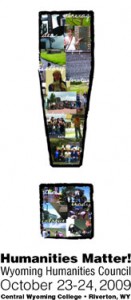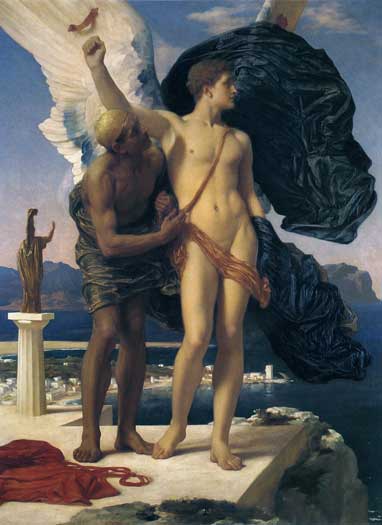Join vgAlt at
Humanities Matter! Conference
Wyoming Humanities Council
October 23-24
Central Wyoming College in Riverton.
Learn about the successful use of virtual, augmented, and alternate reality environments for instruction and enhancing student engagement. I will be presenting my experience and published research on designing instructional space for sustained engagement, extending instructional contact and learning, increasing student motivation and academic production, and the enhancing teaching satisfaction with the seamless integration of technology and new approaches to instruction.
In this talk I will talk about my own experience in k-20 settings using virtual worlds, game environments, models, simulations, and the augmentation and creation of alternate reality learning scenarios. The presentation will offer a cultural -cognitive model of learning with focus on developing comprehension, production and knowledge acts, as well as the critical habits of mind for problem solving and student innovation through play.
On Saturday, join me for Getting Started in Second Life — Academic spelunking through possible worlds.
Look at ways that SL and other instructional environments have been used effectively — some of my own work– and how it can be replicated across content and context.
In this session, we will go through several stages of virtual world acclimation and visit spaces, pedagogies, and tools that may serve as a springboard into new practice.
The Wyoming Humanities Council’s Humanities Matter! conference will bring together representatives of community organizations, museum and library personnel, interested community members, and humanities faculty from across Wyoming to explore how to work together to create humanities courses and public programming that will address issues relevant to their lives, communities, and world.

VIDEO GAMES, READING , AND TRANSMEDIAL COMPREHENSION.
Games represent a high interest accessible medium to build comprehension, and in using games we can continue to engage in topics that are complex, provocative and motivating, and not often found in texts designed to be simplified for the sake of decoding. Games will also help to get these students to reconnect with reading and learning, and create a basis for developing and using comprehension strategies. With this in mind, this knowledge and experience of theory can provide an opportunity for educators to bootstrap traditional print-based literacy and engage students in comprehension development.
Brock Dubbels
The University of Minnesota
The Center for Cognitive Sciences
305 Elliott Hall
Minneapolis, MN 55408
(612) 747-0346
(612) 626-7253
Abstract: In this qualitative study, literacy practices of “struggling†seventh and eighth graders were recorded on videotape as they engaged in both traditional and new literacies practices in an after school video games club. These recordings were analyzed in the context of building comprehension skills with video games. The students struggled with reading and are characterized as unmotivated and disengaged by the school, which may be at the root of their inability to use comprehension strategies. Playing video games is viewed here as a literate practice, and was seen to be more engaging than traditional activities (such as reading school text, writing journals, etc.). The conclusion of this observation makes connections to current research in comprehension and provides a basis for teachers to use games to develop comprehension and learning.
Key Terms: situation, event indexing model, causal integration model, ludic, interaction, comprehension, knowledge act, decoding, agency, engagement, identity, self-monitoring, metacognition, transmedial, walk-through, level-up, button-mashing
This selected excerpt comes from:
Dubbels, B.R. (2008) Video games, reading, and transmedial comprehension. In R. E. Ferdig (Ed.),Reference. Information ScienceHandbook of research on effective electronic gaming in education.
 Dance Dance Education and Rites of Passage
Dance Dance Education and Rites of Passage
—Lessons learned about the importance of play in sustaining engagement from a high school “girl gamer†based upon socio- and cultural-cognitive analysis for designing instructional environments to elicit and sustain engagement through identity construction.
Brock Dubbels
The Center for Cognitive Sciences, Reading Education
The University of Minnesota, Department of Curriculum & Instruction,
Abstract
The experience of a successful adolescent learner will be described from the student’s perspective about learning the video game Dance Dance Revolution through selected passages from a phenomenological interview van Manen (1997). The question driving this investigation is, “Why did she sustain engagement in learning?†The importance of this question came out of the need for background on how to create an afterschool program that was to use Dance Dance Revolution as an after school activity that might engage adolescents and tweens to become more physically active and reduce the risk of adult obesity, and to increase bone density for these developing young people through playing the game over time. The difficulty of creating this program was the risk that the students would not sustain engagement in the activity, and thus we would not have a viable sample for the bone density adolescent obesity study. Although the phenomenological interview is generally considered a critical social science approach, the interview transcript was also analyzed using methods from critical discourse (Gee, 1992, 1996, 1999; Fairclough, 2007) with a framework developed from Chapman’s (2006) review of engagement, and from: elements of Communities of Practice (Wenger, 1996), Affinity Groups (Gee, 2001), Positive Interdependence (Deutsch 1960; Johnson and Johnson, 1989), and Self-Determination (Ryan and Deci, 2008). These social learning theories are used to explore issues of sustaining engagement through socially distributed reinforcement and to operationalize the ambiguity of identity as a construct into something that might be replicated for designing instruction. Implications of this study include understanding the potential construction of learning environments that motivate and sustain engagement in learning and the importance of identity construction (Buckingham, 2007) for teachers to motivate and engage their students. In addition to the analysis of sustained engagement through the four socio- and cultural-cognitive theories, four major principals were extracted from the operationalized themes into a framework for instructional design techniques and theory for engaging learners for game design, training, and in classroom learning.
Key terms: Dance Dance Revolution, Exergaming, Phenomenology, Identity Construction, Self-Determination Theory, Affinity Groups, Positive Interdependence, Cooperative Learning, Motivation, Engagement, Social Learning, Instructional Design, Rites of Passage, Play, Games, Initiation, Semiotic Domains, Apprenticeship, Transformation.
Think of toys as pivots– as Vygotsky did, as well as prior posts on this site regarding play. Toys are representation,. where a child may imagine that they are participating in something imagined and fantastic that might otherwise be too dangerous to participate in or initially too difficult to do. However, with the toy, the child might come closer to realizing the fantasy. What the experts in the article seem to ignore is that more complex toys can make the act closer to the real act — MIMESIS — imitation of the thing to be learned and played to gain competence and gain respect enough to engage in the real act through showing aptitude, knowledge, and competence. Read more










